“When we talk about plant communication, people know immediately what we are talking about,” explains Marina Martin Curran, sustainable development manager at Vivent. Just as trees exchange information through their roots using electrical, mechanical and chemical signals, fruit and vegetables also emit various signals throughout their life cycle.
The Swiss company Vivent, pioneer in electrophysiology, has decided to use those signals in order to provide producers with crop monitoring solutions through PhytlSigns. Already implemented on greenhouse crops for cucumbers, tomatoes and peppers, and in open fields for vines, Vivent is now conducting trials on lettuce, asparagus, strawberries in polytunnels, as well as sugar beets and potatoes.
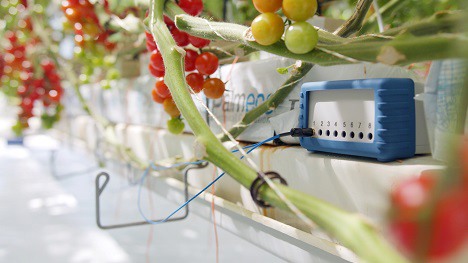
Biosensors to analyze and AI to decipher
PhytlSigns is a technology based on biosensors that analyze and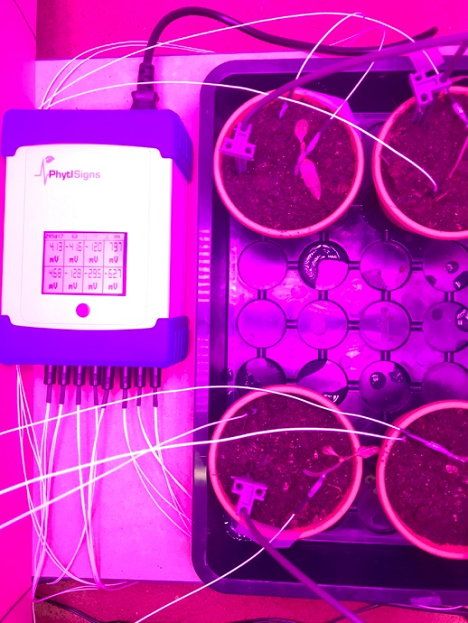 interpret the electrical signals emitted by plants. The sensor’s 8 channels, connected to electrodes placed on the stem of the plant, capture the internal signals that are later analyzed.
interpret the electrical signals emitted by plants. The sensor’s 8 channels, connected to electrodes placed on the stem of the plant, capture the internal signals that are later analyzed.
“What was crucial for the founders was the discovery of the use of artificial intelligence.” Thanks to this intelligence, Vivent was able to create algorithms to label all the signals received and thus decipher them, because each signal has its own problem. "For example, one signal will correspond to water stress, another to a nutrient deficiency or the presence of pests..."
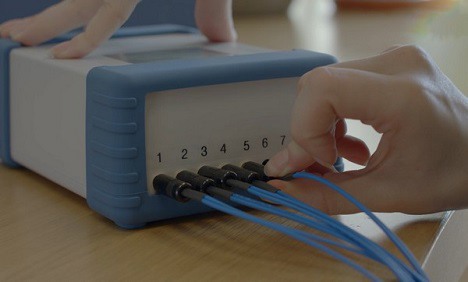
The data collected is analyzed by a team of scientists. “The analyses are in the process of being automated, which allows the producer to be notified directly on his phone. Our goal is also to make the producers’ lives easier so that they are not drowned in a multitude of information. Our technology allows them to receive clear information in real time in order to react quickly.”
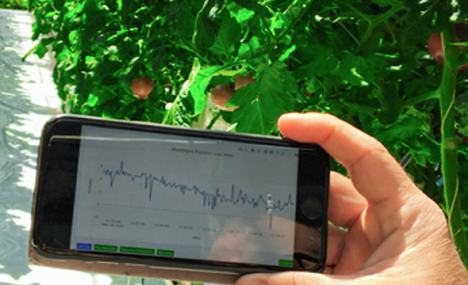
Optimizing crop conditions
Knowing the needs of the plant at each stage of its development in order to provide it with what it needs: a major technological breakthrough that helps secure crops, increase yields and reduce losses as well as inputs. “Supporting sustainable agriculture also means supporting the economic aspect by reducing inputs, and therefore reducing the costs. Optimizing the use of nutrients and fertilizers helps producers save money as well as water, while also preserving the land.”
Another advantage for the use of pesticides, as more and more molecules are being banned and alternatives are often more expensive or simply do not exist.
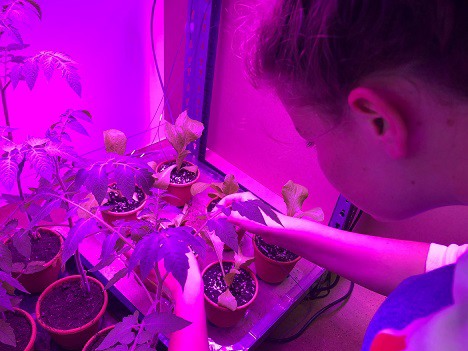
Taking the “bad hours” into account
The calculations made for 2021 regarding greenhouse tomatoes indicate a 12% increase in yield by reducing the stress periods. “For the greenhouse crops, tomatoes are subjected to phases of intense stress throughout their life cycles. We call these phases the ‘bad hours’ (leaves being cut, harvest…). Producers are aware of them and do what they can to reduce these stress periods. But we have recently discovered that there are other ‘bad hours’, as a result of the heat or the cold. If we can reduce these periods of intense stress, we can increase the yields by 12% or more.”
Better crop management in face of weather hazards
As weather hazards become increasingly frequent, the PhytlSigns technology can prove valuable for irrigation. “The risk of drought that increases each year raises the question of irrigation. When and how to irrigate? Our sensors can ensure micro-irrigation according to the needs of the plant.”
This solution can also be beneficial in the event of frost. Although the weather remains unpredictable, the PhytlSigns technology can predict flowering. “If we are aware of the flowering stage, we can plan everything. So if the producers know when the flowering will take place, they can plan and set up their protection methods.”
These developments have led Vivent to work together with Agroscope, the Swiss federal agricultural research center, on new varieties of potatoes, more resistant to water stress.
For more information:
Marina Martin Curran, Sustainability Manager
Vivent
vivent.ch
